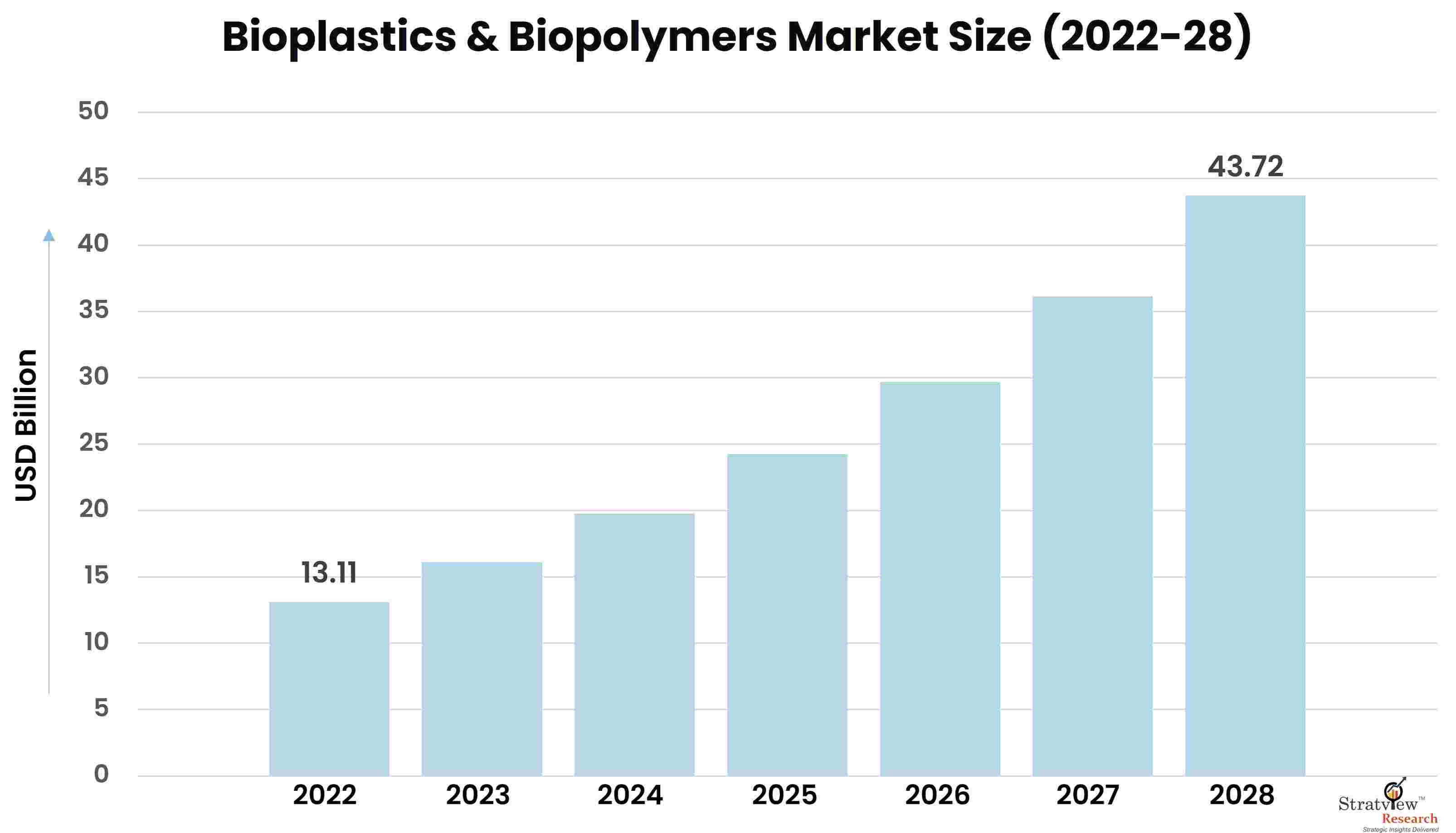-
Ροή Δημοσιεύσεων
- ΑΝΑΚΆΛΥΨΕ
-
Σελίδες
-
Ομάδες
-
Events
-
Blogs
-
Marketplace
-
Forum
-
Παιχνίδια
Analyzing the Growth Drivers in the Bioplastics & Biopolymers Market

The bioplastics and biopolymers market is witnessing unprecedented growth as environmental concerns and sustainability initiatives take center stage across industries. This market is being driven by a combination of factors, from government regulations and consumer preferences to advancements in technology and material science. In this article, we analyze the key growth drivers propelling the bioplastics and biopolymers market forward.
According to Stratview Research, the bioplastics & biopolymers market was estimated at USD 13.11 billion in 2022 and is likely to grow at a CAGR of 22.1% during 2023-2028 to reach USD 43.72 billion in 2028.
1. Environmental Sustainability and Plastic Pollution
One of the primary drivers of the bioplastics and biopolymers market is the growing global concern over plastic pollution and its impact on the environment. Traditional plastics, derived from fossil fuels, take hundreds of years to degrade, leading to significant waste accumulation in landfills and oceans. Bioplastics, made from renewable sources like corn starch, sugarcane, and cellulose, offer a sustainable alternative. The biodegradable and compostable nature of certain bioplastics reduces their environmental footprint, making them an attractive solution for businesses seeking to align with eco-friendly practices.
2. Regulatory Push and Government Support
Governments worldwide are playing a crucial role in driving the adoption of bioplastics through regulations and policies that limit the use of single-use plastics and encourage the development of sustainable materials. The European Union, for example, has implemented bans on various single-use plastic products, which has accelerated the demand for bioplastic alternatives. In addition, subsidies, tax breaks, and research grants are being provided to companies developing biopolymers, further boosting market growth.
3. Consumer Demand for Eco-Friendly Products
Consumers are becoming increasingly aware of the environmental impact of the products they use and are actively seeking out sustainable alternatives. This shift in consumer behavior is a key driver for the bioplastics market, particularly in sectors like packaging, food and beverage, and personal care. Brands are responding by incorporating bioplastics into their product packaging and marketing their products as eco-friendly, which in turn stimulates market demand. The move toward green products is a critical factor that will continue to shape the industry’s growth trajectory.
4. Technological Innovation and Improved Performance
Advancements in bioplastic and biopolymer technologies have significantly enhanced the material properties of bioplastics, making them more durable, flexible, and cost-effective. Innovations in biotechnology have enabled the development of new materials such as polylactic acid (PLA), polyhydroxyalkanoates (PHA), and bio-based polyethylene (bio-PE). These materials offer performance comparable to conventional plastics, expanding their applications across industries like automotive, agriculture, and healthcare.
Conclusion
The bioplastics and biopolymers market is being driven by a combination of environmental, regulatory, and technological factors, making it a key area of growth in the global push for sustainability. With increasing consumer demand, government support, and continuous innovations, the market is expected to continue its upward trajectory, offering long-term solutions for reducing plastic waste and environmental impact.
- Whats New
- Shopping
- Wellness
- Sports
- Theater
- Religion
- Party
- Networking
- Music
- Literature
- Art
- Health
- Παιχνίδια
- Food
- Drinks
- Fitness
- Gardening
- Dance
- Causes
- Film
- Crafts
- Other/General
- Cricket
- Grooming
- Technology

